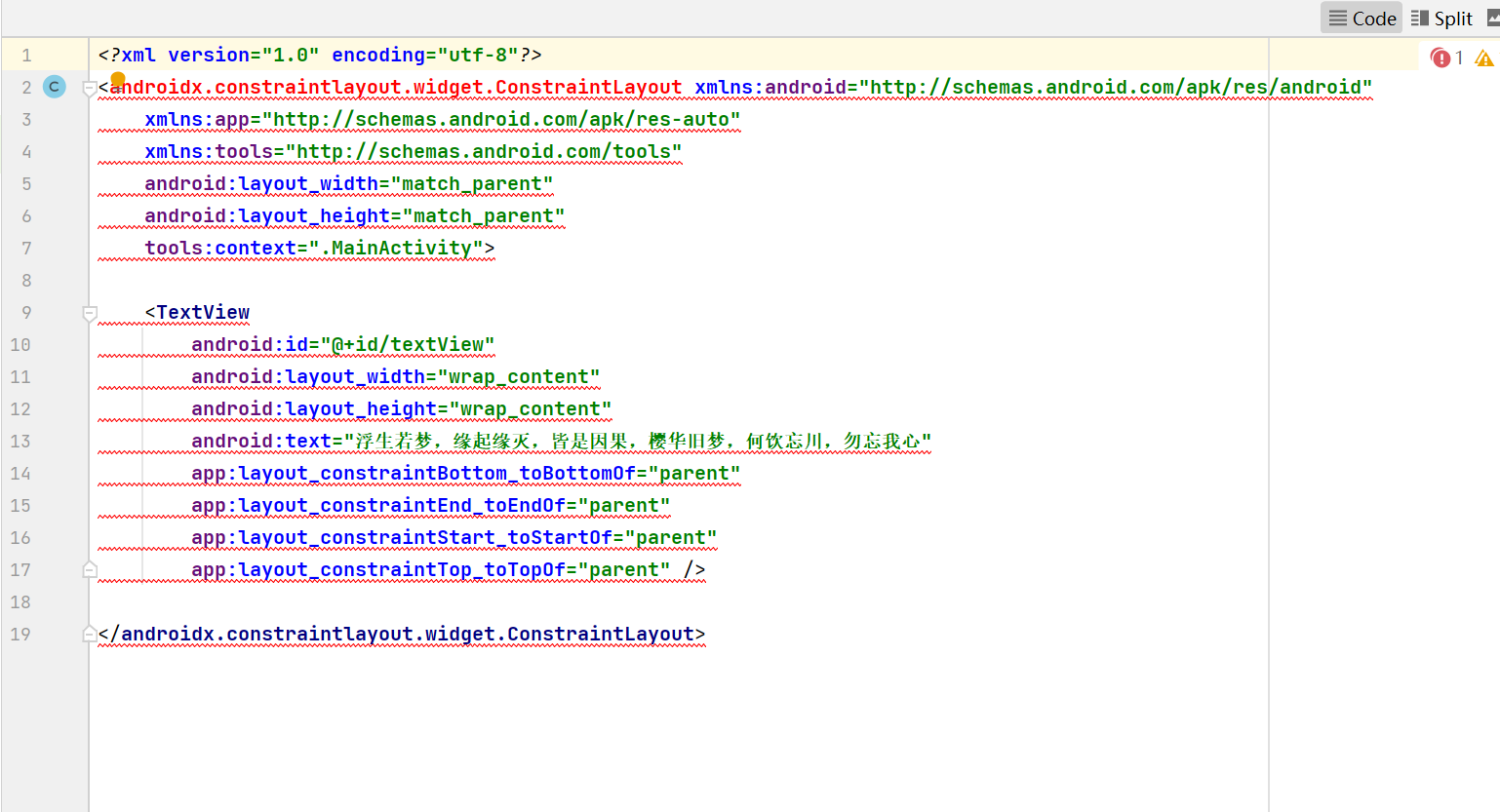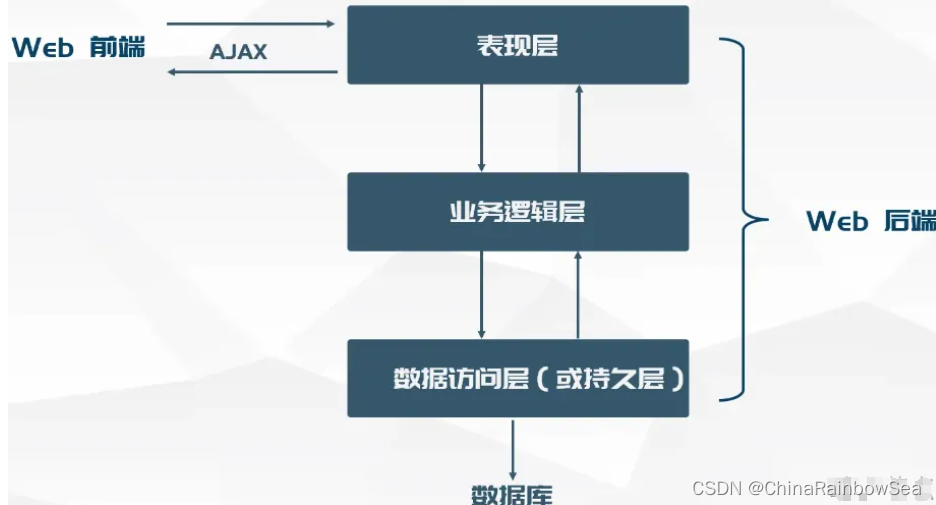一.前言
spring作为JAVAEE最核心的框架,是每一个java开发者所必须掌握的,非常重要,本篇从一个简单例子入手,由浅入深的分析spring创建bean的全过程,目标在于彻底搞懂spring原理,方便以后整合其他框架
二.测试代码
/**
* * * @author <a href="mailto:2256222053@qq.com">zc</a>
* @Date 2022/4/3 0003 14:45
*/
@Lazy
public class CreateBean {
private String name;
private int age;
public CreateBean() {
}
public CreateBean(int age) {
this.age = age;
}
public CreateBean(String name) {
this.name = name;
}
public CreateBean(String name, int age) {
this.name = name;
this.age = age;
}
public void setName(String name) {
this.name = name;
}
public void setAge(int age) {
this.age = age;
}
@Override
public String toString() {
return "CreateBean{" +
"name='" + name + '\'' +
", age=" + age +
'}';
}
}
- 一个交给spring管理的bean,为了好debug,加了一个懒加载属性
@Test
void doCreateBean(){
AnnotationConfigApplicationContext context = new AnnotationConfigApplicationContext(CreateBean.class);
Object bean = context.getBean("createBean", "chuan", 24);
System.out.println(bean);
}
- 一个启动类,getBean是入口,开始创建bean
三. 开始获取bean:getBean()
@Override
public <T> T getBean(String name, Class<T> requiredType) throws BeansException {
assertBeanFactoryActive();
return getBeanFactory().getBean(name, requiredType);
}
1. 判断容器的活动状态:assertBeanFactoryActive()
容器在启动的时候会设置这个状态值,具体在:AbstractApplicationContext#prepareRefresh()
2.获取beanFactory:getBeanFactory()
从beanFactory中获取bean,默认这个beanFactory是DefaultListableBeanFactory,因为AnnotationConfigApplicationContext继承了GenericApplicationContext,通过他的构造器可以发现
public GenericApplicationContext() {
this.beanFactory = new DefaultListableBeanFactory();
}
3.getBean(name, requiredType)
通过bean的名称获取bean,第二个参数是bean的类型,如果传了后面会做类型转换,否则就是Object
@Override
public <T> T getBean(String name, Class<T> requiredType) throws BeansException {
return doGetBean(name, requiredType, null, false);
}
getBean:这个类有很多getBean方法,这是使用重载的表现,但是最终都会调用doGetBean,这个方法有四个参数,分别是bean的名称name,bean的类型,创建bean时构造参数的值
四.真正获取Bean的方法:doGetBean()
protected <T> T doGetBean(
String name, @Nullable Class<T> requiredType, @Nullable Object[] args, boolean typeCheckOnly)
throws BeansException {
String beanName = transformedBeanName(name);
Object beanInstance;
// Eagerly check singleton cache for manually registered singletons.
Object sharedInstance = getSingleton(beanName);
if (sharedInstance != null && args == null) {
if (logger.isTraceEnabled()) {
if (isSingletonCurrentlyInCreation(beanName)) {
logger.trace("Returning eagerly cached instance of singleton bean '" + beanName +
"' that is not fully initialized yet - a consequence of a circular reference");
}
else {
logger.trace("Returning cached instance of singleton bean '" + beanName + "'");
}
}
beanInstance = getObjectForBeanInstance(sharedInstance, name, beanName, null);
}
else {
// Fail if we're already creating this bean instance:
// We're assumably within a circular reference. if (isPrototypeCurrentlyInCreation(beanName)) {
throw new BeanCurrentlyInCreationException(beanName);
}
// Check if bean definition exists in this factory.
BeanFactory parentBeanFactory = getParentBeanFactory();
if (parentBeanFactory != null && !containsBeanDefinition(beanName)) {
// Not found -> check parent.
String nameToLookup = originalBeanName(name);
if (parentBeanFactory instanceof AbstractBeanFactory) {
return ((AbstractBeanFactory) parentBeanFactory).doGetBean(
nameToLookup, requiredType, args, typeCheckOnly);
}
else if (args != null) {
// Delegation to parent with explicit args.
return (T) parentBeanFactory.getBean(nameToLookup, args);
}
else if (requiredType != null) {
// No args -> delegate to standard getBean method.
return parentBeanFactory.getBean(nameToLookup, requiredType);
}
else {
return (T) parentBeanFactory.getBean(nameToLookup);
}
}
if (!typeCheckOnly) {
markBeanAsCreated(beanName);
}
StartupStep beanCreation = this.applicationStartup.start("spring.beans.instantiate")
.tag("beanName", name);
try {
if (requiredType != null) {
beanCreation.tag("beanType", requiredType::toString);
}
RootBeanDefinition mbd = getMergedLocalBeanDefinition(beanName);
checkMergedBeanDefinition(mbd, beanName, args);
// Guarantee initialization of beans that the current bean depends on.
String[] dependsOn = mbd.getDependsOn();
if (dependsOn != null) {
for (String dep : dependsOn) {
if (isDependent(beanName, dep)) {
throw new BeanCreationException(mbd.getResourceDescription(), beanName,
"Circular depends-on relationship between '" + beanName + "' and '" + dep + "'");
}
registerDependentBean(dep, beanName);
try {
getBean(dep);
}
catch (NoSuchBeanDefinitionException ex) {
throw new BeanCreationException(mbd.getResourceDescription(), beanName,
"'" + beanName + "' depends on missing bean '" + dep + "'", ex);
}
}
}
// Create bean instance.
if (mbd.isSingleton()) {
sharedInstance = getSingleton(beanName, () -> {
try {
return createBean(beanName, mbd, args);
}
catch (BeansException ex) {
throw ex;
}
});
beanInstance = getObjectForBeanInstance(sharedInstance, name, beanName, mbd);
}
else if (mbd.isPrototype()) {
// It's a prototype -> create a new instance.
Object prototypeInstance = null;
try {
beforePrototypeCreation(beanName);
prototypeInstance = createBean(beanName, mbd, args);
}
finally {
afterPrototypeCreation(beanName);
}
beanInstance = getObjectForBeanInstance(prototypeInstance, name, beanName, mbd);
}
else {
String scopeName = mbd.getScope();
if (!StringUtils.hasLength(scopeName)) {
throw new IllegalStateException("No scope name defined for bean '" + beanName + "'");
}
Scope scope = this.scopes.get(scopeName);
if (scope == null) {
throw new IllegalStateException("No Scope registered for scope name '" + scopeName + "'");
}
try {
Object scopedInstance = scope.get(beanName, () -> {
beforePrototypeCreation(beanName);
try {
return createBean(beanName, mbd, args);
}
finally {
afterPrototypeCreation(beanName);
}
});
beanInstance = getObjectForBeanInstance(scopedInstance, name, beanName, mbd);
}
catch (IllegalStateException ex) {
throw new ScopeNotActiveException(beanName, scopeName, ex);
}
}
}
catch (BeansException ex) {
beanCreation.tag("exception", ex.getClass().toString());
beanCreation.tag("message", String.valueOf(ex.getMessage()));
cleanupAfterBeanCreationFailure(beanName);
throw ex;
}
finally {
beanCreation.end();
}
}
return adaptBeanInstance(name, beanInstance, requiredType);
}
这个方法很复杂,但是可以简要分为以下几个步骤
1. 获取bean名称
transformedBeanName()
因为可能会有前缀&,获取FactoryBean的情况,所以需要在这解析
2.尝试从缓存中获取bean
getSingleton()
3.判断这个bean是否在创建中
isPrototypeCurrentlyInCreation(beanName)
这一步目的是为了防止循环依赖
4.标记为正在创建中
markBeanAsCreated(beanName):将这个bean
5.合并Definition
getMergedLocalBeanDefinition(beanName)
通过parentName的值来判断是否有父definition,合并的目的在于保证definition的正确性,spring在每次要用definition的时候都会进行一次合并,因为有很多扩展点可以修改definition
6.检查合并后的Definition
checkMergedBeanDefinition(mbd, beanName, args);
7.获取依赖的Bean
mbd.getDependsOn();
如果不为空则会先创建依赖的bean
8.获取真正需要的Bean
getSingleton(beanName,()->{return createBean(beanName, mbd, args);})
获取一个注册好的bean,如果没有,会使用参数FactoryBean注册一个,非常重要,真正创建bean的入口,下面会详细会讲创建过程
getObjectForBeanInstance(sharedInstance, name, beanName, mbd);,如果name有前缀&,那么会返回FactoryBean的实例,如果注册的是一个FactoryBean,这里会调用getObject来返回真正的bean对象
adaptBeanInstance(name, beanInstance, requiredType);最后一步类型转换
五.获取Bean的过程: getSingleton()
public Object getSingleton(String beanName, ObjectFactory<?> singletonFactory) {
Assert.notNull(beanName, "Bean name must not be null");
synchronized (this.singletonObjects) {
Object singletonObject = this.singletonObjects.get(beanName);
if (singletonObject == null) {
if (this.singletonsCurrentlyInDestruction) {
throw new BeanCreationNotAllowedException(beanName,
"Singleton bean creation not allowed while singletons of this factory are in destruction " +
"(Do not request a bean from a BeanFactory in a destroy method implementation!)");
}
if (logger.isDebugEnabled()) {
logger.debug("Creating shared instance of singleton bean '" + beanName + "'");
}
beforeSingletonCreation(beanName);
boolean newSingleton = false;
boolean recordSuppressedExceptions = (this.suppressedExceptions == null);
if (recordSuppressedExceptions) {
this.suppressedExceptions = new LinkedHashSet<>();
}
try {
singletonObject = singletonFactory.getObject();
newSingleton = true;
}
catch (IllegalStateException ex) {
if (singletonObject == null) {
throw ex;
}
}
catch (BeanCreationException ex) {
if (recordSuppressedExceptions) {
for (Exception suppressedException : this.suppressedExceptions) {
ex.addRelatedCause(suppressedException);
}
}
throw ex;
}
finally {
if (recordSuppressedExceptions) {
this.suppressedExceptions = null;
}
afterSingletonCreation(beanName);
}
if (newSingleton) {
addSingleton(beanName, singletonObject);
}
}
return singletonObject;
}
}
1.尝试从一级缓存中获取Bean
Object singletonObject = this.singletonObjects.get(beanName);
我们这里肯定是没有的,如果有则会直接返回
2.将这个Bean标记为创建中
beforeSingletonCreation(beanName);
里面主要操作就是将这个beanName添加进singletonsCurrentlyInCreation数组中,这个数组里面存的都是正在创建的Bean名称
3.创建Bean
singletonObject = singletonFactory.getObject();
singletonFactory是上面传过来的参数,所以这会去调用上面传过来的的createBean方法,这里使用了@FunctionalInterface函数接口,非常精髓,下面会详细分析createBean的过程
4.将这个Bean标记为已创建
afterSingletonCreation(beanName);
对应上面第二步,删除singletonsCurrentlyInCreation的这个beanName,标记他已经创建完成
5.注册Bean
addSingleton(beanName, singletonObject)
注册bean,把上面第三步创建出来的singletonObject添加进一级缓存singletonObjects和单例缓存registeredSingletons中,删除三级缓存singletonFactories和二级缓存earlySingletonObjects中key为beanName的值
六.开始创建Bean: createBean(beanName, mbd, args)
protected Object createBean(String beanName, RootBeanDefinition mbd, @Nullable Object[] args) throws BeanCreationException {
if (this.logger.isTraceEnabled()) {
this.logger.trace("Creating instance of bean '" + beanName + "'");
}
RootBeanDefinition mbdToUse = mbd;
Class<?> resolvedClass = this.resolveBeanClass(mbd, beanName, new Class[0]);
if (resolvedClass != null && !mbd.hasBeanClass() && mbd.getBeanClassName() != null) {
mbdToUse = new RootBeanDefinition(mbd);
mbdToUse.setBeanClass(resolvedClass);
}
try {
mbdToUse.prepareMethodOverrides();
} catch (BeanDefinitionValidationException var9) {
throw new BeanDefinitionStoreException(mbdToUse.getResourceDescription(), beanName, "Validation of method overrides failed", var9);
}
Object beanInstance;
try {
beanInstance = this.resolveBeforeInstantiation(beanName, mbdToUse);
if (beanInstance != null) {
return beanInstance;
}
} catch (Throwable var10) {
throw new BeanCreationException(mbdToUse.getResourceDescription(), beanName, "BeanPostProcessor before instantiation of bean failed", var10);
}
try {
beanInstance = this.doCreateBean(beanName, mbdToUse, args);
if (this.logger.isTraceEnabled()) {
this.logger.trace("Finished creating instance of bean '" + beanName + "'");
}
return beanInstance;
} catch (ImplicitlyAppearedSingletonException | BeanCreationException var7) {
throw var7;
} catch (Throwable var8) {
throw new BeanCreationException(mbdToUse.getResourceDescription(), beanName, "Unexpected exception during bean creation", var8);
}
}
1.加载类
Class<?> resolvedClass = resolveBeanClass(mbd, beanName);
2.标记override的属性
mbdToUse.prepareMethodOverrides();
其实就是lookup-method和replace-method两个属性,如果没有重载会记录下来,后面就不会根据参数判断是哪一个具体的方法,减少了系统开销
3,实例化之前后置处理器
Object bean = resolveBeforeInstantiation(beanName, mbdToUse);
调用所有实现了InstantiationAwareBeanPostProcessor接口的类的postProcessBeforeInstantiation方法,如果返回不为null,会接着调用所有实现了BeanPostProcessor接口的类的postProcessAfterInitialization方法,然后返回,aop就是在此处实现的,我们这里所有实现了InstantiationAwareBeanPostProcessor接口的类都是默认的,返回的都是null,所以不会执行后置处理器的after方法,会返回一个null,下面是参考代码
@Nullable
protected Object resolveBeforeInstantiation(String beanName, RootBeanDefinition mbd) {
Object bean = null;
if (!Boolean.FALSE.equals(mbd.beforeInstantiationResolved)) {
if (!mbd.isSynthetic() && this.hasInstantiationAwareBeanPostProcessors()) {
Class<?> targetType = this.determineTargetType(beanName, mbd);
if (targetType != null) {
bean = this.applyBeanPostProcessorsBeforeInstantiation(targetType, beanName);
if (bean != null) {
bean = this.applyBeanPostProcessorsAfterInitialization(bean, beanName);
}
}
}
mbd.beforeInstantiationResolved = bean != null;
}
return bean;
}
4.判断第三步返回的bean是否为空
Object bean = resolveBeforeInstantiation(beanName, mbdToUse);
if (bean != null) {
return bean;
}
这一步比较重要,因为如果不为空会直接返回,这代表着不会执行spring创建bean的方法,比如后面的属性注入,aware接口回调,初始化前,初始化,初始化后都不会执行
5.创建Bean
Object beanInstance = doCreateBean(beanName, mbdToUse, args);
真正开始创建bean的方法,spring真正干活的方法都是以do开头的,我认为这是一种很好的方法命名规则
七.真正开始创建Bean: doCreateBean(beanName, mbdToUse, args)
protected Object doCreateBean(String beanName, RootBeanDefinition mbd, @Nullable Object[] args) throws BeanCreationException {
BeanWrapper instanceWrapper = null;
if (mbd.isSingleton()) {
instanceWrapper = (BeanWrapper)this.factoryBeanInstanceCache.remove(beanName);
}
if (instanceWrapper == null) {
instanceWrapper = this.createBeanInstance(beanName, mbd, args);
}
synchronized(mbd.postProcessingLock) {
if (!mbd.postProcessed) {
try {
this.applyMergedBeanDefinitionPostProcessors(mbd, beanType, beanName);
} catch (Throwable var17) {
}
mbd.postProcessed = true;
}
}
boolean earlySingletonExposure = mbd.isSingleton() && this.allowCircularReferences && this.isSingletonCurrentlyInCreation(beanName);
if (earlySingletonExposure) {
this.addSingletonFactory(beanName, () -> {
return this.getEarlyBeanReference(beanName, mbd, bean);
});
}
Object exposedObject = bean;
this.populateBean(beanName, mbd, instanceWrapper);
exposedObject = this.initializeBean(beanName, exposedObject, mbd);
if (earlySingletonExposure) {
Object earlySingletonReference = this.getSingleton(beanName, false);
if (earlySingletonReference != null) {
if (exposedObject == bean) {
exposedObject = earlySingletonReference;
} else if (!this.allowRawInjectionDespiteWrapping && this.hasDependentBean(beanName)) {
String[] dependentBeans = this.getDependentBeans(beanName);
Set<String> actualDependentBeans = new LinkedHashSet(dependentBeans.length);
String[] var12 = dependentBeans;
int var13 = dependentBeans.length;
for(int var14 = 0; var14 < var13; ++var14) {
String dependentBean = var12[var14];
if (!this.removeSingletonIfCreatedForTypeCheckOnly(dependentBean)) {
actualDependentBeans.add(dependentBean);
}
}
}
}
}
try {
this.registerDisposableBeanIfNecessary(beanName, bean, mbd);
return exposedObject;
} catch (BeanDefinitionValidationException var16) {
throw new BeanCreationException(mbd.getResourceDescription(), beanName, "Invalid destruction signature", var16);
}
}
1.创建bean实例
createBeanInstance(beanName, mbd, args)
2.执行Definition的后置处理器
applyMergedBeanDefinitionPostProcessors(mbd, beanType, beanName)
spring在这一步实现了对元注解的解析
如果这个bean是单例的且正在创建中,则会加入三级缓存中,目的是暴露bean的引用,解决循环依赖:this.addSingletonFactory(beanName, () -> {
return this.getEarlyBeanReference(beanName, mbd, bean);
})
3.属性填充
populateBean(beanName, mbd, instanceWrapper);
4.初始化bean
initializeBean(beanName, exposedObject, mbd);
5.注册Bean的销毁方法
registerDisposableBeanIfNecessary(beanName, bean, mbd)
到这才真正开始进入创建bean的流程,流程中的每一步都非常复杂,建议还是很模糊的同学自重,避免走火入魔想对我人身攻击的。下面就每个方法重要的点一一解析,严格按照方法的执行先后顺序来说明
1.1 创建Bean实例
protected BeanWrapper createBeanInstance(String beanName, RootBeanDefinition mbd, @Nullable Object[] args) {
// Make sure bean class is actually resolved at this point.
Class<?> beanClass = resolveBeanClass(mbd, beanName);
if (beanClass != null && !Modifier.isPublic(beanClass.getModifiers()) && !mbd.isNonPublicAccessAllowed()) {
throw new BeanCreationException(mbd.getResourceDescription(), beanName,
"Bean class isn't public, and non-public access not allowed: " + beanClass.getName());
}
Supplier<?> instanceSupplier = mbd.getInstanceSupplier();
if (instanceSupplier != null) {
return obtainFromSupplier(instanceSupplier, beanName);
}
if (mbd.getFactoryMethodName() != null) {
return instantiateUsingFactoryMethod(beanName, mbd, args);
}
// Shortcut when re-creating the same bean...
boolean resolved = false;
boolean autowireNecessary = false;
if (args == null) {
synchronized (mbd.constructorArgumentLock) {
if (mbd.resolvedConstructorOrFactoryMethod != null) {
resolved = true;
autowireNecessary = mbd.constructorArgumentsResolved;
}
}
}
if (resolved) {
if (autowireNecessary) {
return autowireConstructor(beanName, mbd, null, null);
}
else {
return instantiateBean(beanName, mbd);
}
}
// Candidate constructors for autowiring?
Constructor<?>[] ctors = determineConstructorsFromBeanPostProcessors(beanClass, beanName);
if (ctors != null || mbd.getResolvedAutowireMode() == AUTOWIRE_CONSTRUCTOR ||
mbd.hasConstructorArgumentValues() || !ObjectUtils.isEmpty(args)) {
return autowireConstructor(beanName, mbd, ctors, args);
}
// Preferred constructors for default construction?
ctors = mbd.getPreferredConstructors();
if (ctors != null) {
return autowireConstructor(beanName, mbd, ctors, null);
}
// No special handling: simply use no-arg constructor.
return instantiateBean(beanName, mbd);
}
1. 通过Supplier接口创建Bean实例
Supplier<?> instanceSupplier = mbd.getInstanceSupplier();
if (instanceSupplier != null) {
return obtainFromSupplier(instanceSupplier, beanName);
}
我们这里没有使用这个方式,这种方式需要在注册的时候提供如下
public class C implements Supplier<C> {
@Override
public C get() {
System.out.println("Supplier");
return new C();
}
}
/**
* 自定义实例化方法{@link java.util.function.Supplier#get}
* 源码调用{@link org.springframework.beans.factory.support.AbstractAutowireCapableBeanFactory#createBeanInstance}
*/@Test
void supplier(){
AnnotationConfigApplicationContext context = new AnnotationConfigApplicationContext();
context.registerBean(C.class,new C());
context.refresh();
context.getBean("c");
}
2. 通过静态工厂或实例工厂创建Bean实例
if (mbd.getFactoryMethodName() != null) {
return instantiateUsingFactoryMethod(beanName, mbd, args);
}
我们这没有使用工厂的方式,这两种使用方式如下:
实例工厂:
public class FactoryBeanService {
private static Bean bean = new Bean();
private FactoryBeanService() {}
public Bean createInstance() {
System.out.println("实例工厂方法实例化bean");
return bean;
}
}
<?xml version="1.0" encoding="UTF-8"?>
<beans xmlns="http://www.springframework.org/schema/beans"
xmlns:xsi="http://www.w3.org/2001/XMLSchema-instance"
xsi:schemaLocation="http://www.springframework.org/schema/beans http://www.springframework.org/schema/beans/spring-beans.xsd">
<bean id="serviceLocator"
class="com.youlai.laboratory.spring.create.FactoryBeanService"
/>
<bean id="factoryBeanService"
factory-bean="serviceLocator"
factory-method="createInstance"
/>
</beans>
@Test
void factoryBean(){
ClassPathXmlApplicationContext xmlApplicationContext = new ClassPathXmlApplicationContext("classpath:spring/create/FactoryBean.xml");
}
静态工厂:
public class FactoryClassService {
private static Bean bean = new Bean();
private FactoryClassService() {}
public static Bean createInstance() {
System.out.println("静态工厂方法实例化bean");
return bean;
}
}
<?xml version="1.0" encoding="UTF-8"?>
<beans xmlns="http://www.springframework.org/schema/beans"
xmlns:xsi="http://www.w3.org/2001/XMLSchema-instance"
xsi:schemaLocation="http://www.springframework.org/schema/beans http://www.springframework.org/schema/beans/spring-beans.xsd">
<bean id="factoryClassService"
class="com.youlai.laboratory.spring.create.FactoryClassService"
factory-method="createInstance"/>
</beans>
@Test
void factoryMethod(){
ClassPathXmlApplicationContext xmlApplicationContext = new ClassPathXmlApplicationContext("classpath:spring/create/FactoryClass.xml");
}
3. 推断可用的构造器
Constructor<?>[] ctors = determineConstructorsFromBeanPostProcessors(beanClass, beanName)
这一步比较重要,下面会详细分析
@Override
@Nullable
public Constructor<?>[] determineCandidateConstructors(Class<?> beanClass, final String beanName)
throws BeanCreationException {
// Let's check for lookup methods here...
if (!this.lookupMethodsChecked.contains(beanName)) {
if (AnnotationUtils.isCandidateClass(beanClass, Lookup.class)) {
try {
Class<?> targetClass = beanClass;
do {
ReflectionUtils.doWithLocalMethods(targetClass, method -> {
Lookup lookup = method.getAnnotation(Lookup.class);
if (lookup != null) {
Assert.state(this.beanFactory != null, "No BeanFactory available");
LookupOverride override = new LookupOverride(method, lookup.value());
try {
RootBeanDefinition mbd = (RootBeanDefinition)
this.beanFactory.getMergedBeanDefinition(beanName);
mbd.getMethodOverrides().addOverride(override);
}
catch (NoSuchBeanDefinitionException ex) {
throw new BeanCreationException(beanName,
"Cannot apply @Lookup to beans without corresponding bean definition");
}
}
});
targetClass = targetClass.getSuperclass();
}
while (targetClass != null && targetClass != Object.class);
}
catch (IllegalStateException ex) {
throw new BeanCreationException(beanName, "Lookup method resolution failed", ex);
}
}
this.lookupMethodsChecked.add(beanName);
}
// Quick check on the concurrent map first, with minimal locking.
Constructor<?>[] candidateConstructors = this.candidateConstructorsCache.get(beanClass);
if (candidateConstructors == null) {
// Fully synchronized resolution now...
synchronized (this.candidateConstructorsCache) {
candidateConstructors = this.candidateConstructorsCache.get(beanClass);
if (candidateConstructors == null) {
Constructor<?>[] rawCandidates;
try {
rawCandidates = beanClass.getDeclaredConstructors();
}
catch (Throwable ex) {
throw new BeanCreationException(beanName,
"Resolution of declared constructors on bean Class [" + beanClass.getName() +
"] from ClassLoader [" + beanClass.getClassLoader() + "] failed", ex);
}
List<Constructor<?>> candidates = new ArrayList<>(rawCandidates.length);
Constructor<?> requiredConstructor = null;
Constructor<?> defaultConstructor = null;
Constructor<?> primaryConstructor = BeanUtils.findPrimaryConstructor(beanClass);
int nonSyntheticConstructors = 0;
for (Constructor<?> candidate : rawCandidates) {
if (!candidate.isSynthetic()) {
nonSyntheticConstructors++;
}
else if (primaryConstructor != null) {
continue;
}
MergedAnnotation<?> ann = findAutowiredAnnotation(candidate);
if (ann == null) {
Class<?> userClass = ClassUtils.getUserClass(beanClass);
if (userClass != beanClass) {
try {
Constructor<?> superCtor =
userClass.getDeclaredConstructor(candidate.getParameterTypes());
ann = findAutowiredAnnotation(superCtor);
}
catch (NoSuchMethodException ex) {
// Simply proceed, no equivalent superclass constructor found...
}
}
}
if (ann != null) {
if (requiredConstructor != null) {
throw new BeanCreationException(beanName,
"Invalid autowire-marked constructor: " + candidate +
". Found constructor with 'required' Autowired annotation already: " +
requiredConstructor);
}
boolean required = determineRequiredStatus(ann);
if (required) {
if (!candidates.isEmpty()) {
throw new BeanCreationException(beanName,
"Invalid autowire-marked constructors: " + candidates +
". Found constructor with 'required' Autowired annotation: " +
candidate);
}
requiredConstructor = candidate;
}
candidates.add(candidate);
}
else if (candidate.getParameterCount() == 0) {
defaultConstructor = candidate;
}
}
if (!candidates.isEmpty()) {
// Add default constructor to list of optional constructors, as fallback.
if (requiredConstructor == null) {
if (defaultConstructor != null) {
candidates.add(defaultConstructor);
}
else if (candidates.size() == 1 && logger.isInfoEnabled()) {
logger.info("Inconsistent constructor declaration on bean with name '" + beanName +
"': single autowire-marked constructor flagged as optional - " +
"this constructor is effectively required since there is no " +
"default constructor to fall back to: " + candidates.get(0));
}
}
candidateConstructors = candidates.toArray(new Constructor<?>[0]);
}
else if (rawCandidates.length == 1 && rawCandidates[0].getParameterCount() > 0) {
candidateConstructors = new Constructor<?>[] {rawCandidates[0]};
}
else if (nonSyntheticConstructors == 2 && primaryConstructor != null &&
defaultConstructor != null && !primaryConstructor.equals(defaultConstructor)) {
candidateConstructors = new Constructor<?>[] {primaryConstructor, defaultConstructor};
}
else if (nonSyntheticConstructors == 1 && primaryConstructor != null) {
candidateConstructors = new Constructor<?>[] {primaryConstructor};
}
else {
candidateConstructors = new Constructor<?>[0];
}
this.candidateConstructorsCache.put(beanClass, candidateConstructors);
}
}
}
return (candidateConstructors.length > 0 ? candidateConstructors : null);
}
1.处理@Lookup注解的方法
// Let's check for lookup methods here...
if (!this.lookupMethodsChecked.contains(beanName)) {
if (AnnotationUtils.isCandidateClass(beanClass, Lookup.class)) {
try {
Class<?> targetClass = beanClass;
do {
ReflectionUtils.doWithLocalMethods(targetClass, method -> {
Lookup lookup = method.getAnnotation(Lookup.class);
if (lookup != null) {
Assert.state(this.beanFactory != null, "No BeanFactory available");
LookupOverride override = new LookupOverride(method, lookup.value());
try {
RootBeanDefinition mbd = (RootBeanDefinition)
this.beanFactory.getMergedBeanDefinition(beanName);
mbd.getMethodOverrides().addOverride(override);
}
catch (NoSuchBeanDefinitionException ex) {
throw new BeanCreationException(beanName,
"Cannot apply @Lookup to beans without corresponding bean definition");
}
}
});
targetClass = targetClass.getSuperclass();
}
while (targetClass != null && targetClass != Object.class);
}
catch (IllegalStateException ex) {
throw new BeanCreationException(beanName, "Lookup method resolution failed", ex);
}
}
this.lookupMethodsChecked.add(beanName);
}
@Lookup注解主要是为了解决在单例依赖原型时,依赖的原型bean会被修改为单例bean
2. 尝试从缓存中获取可用构造器数组
Constructor<?>[] candidateConstructors = this.candidateConstructorsCache.get(beanClass);
我们这一步获取为空,如果不为空则会跳过下面的3,4,5步骤,执行第六步返回
3. 获取所有构造器
Constructor<?>[] candidateConstructors = this.candidateConstructorsCache.get(beanClass);
4. 效验是否有可用的构造器,生成可用的构造器数组
循环第二步得到的构造器数组,先判断他是否有@Autowire注解,如果没有@Autowire注解,则通过类名是否含有$$字符判断这个类是否是CJLAB的子类,如果不是则跳过,是子类则获取他带有@Autowire注解的构造器,如果这个构造器有@Autowire注解,先获取required属性的值,如果为false则把构造器加入可用的构造器数组中,如果为true,则判断可用的构造器数组是否为空,不为空则代表着这个类有多个@Autowire标注的构造器并且参数都为必传,这种情况就抛出异常,为空就把这个构造器标注为最终使用的构造器,并且加入可用的构造器数组中
5. 生成可用构造器集合并添加到缓存中
if (!candidates.isEmpty()) {
// Add default constructor to list of optional constructors, as fallback.
if (requiredConstructor == null) {
if (defaultConstructor != null) {
candidates.add(defaultConstructor);
}
else if (candidates.size() == 1 && logger.isInfoEnabled()) {
logger.info("Inconsistent constructor declaration on bean with name '" + beanName +
"': single autowire-marked constructor flagged as optional - " +
"this constructor is effectively required since there is no " +
"default constructor to fall back to: " + candidates.get(0));
}
}
candidateConstructors = candidates.toArray(new Constructor<?>[0]);
}
else if (rawCandidates.length == 1 && rawCandidates[0].getParameterCount() > 0) {
candidateConstructors = new Constructor<?>[] {rawCandidates[0]};
}
else if (nonSyntheticConstructors == 2 && primaryConstructor != null &&
defaultConstructor != null && !primaryConstructor.equals(defaultConstructor)) {
candidateConstructors = new Constructor<?>[] {primaryConstructor, defaultConstructor};
}
else if (nonSyntheticConstructors == 1 && primaryConstructor != null) {
candidateConstructors = new Constructor<?>[] {primaryConstructor};
}
else {
candidateConstructors = new Constructor<?>[0];
}
//添加进缓存中
this.candidateConstructorsCache.put(beanClass, candidateConstructors);
6. 根据可用构造器集合的数量返回
(candidateConstructors.length > 0 ? candidateConstructors : null);
如果构建器集合数量大于0,则返回这个集合,否则返回null
4. 通过候选构造器集合创建Bean实例
autowireConstructor(beanName, mbd, ctors, null);
这一步里面非常复杂,选择性看
public BeanWrapper autowireConstructor(String beanName, RootBeanDefinition mbd,
@Nullable Constructor<?>[] chosenCtors, @Nullable Object[] explicitArgs) {
BeanWrapperImpl bw = new BeanWrapperImpl();
this.beanFactory.initBeanWrapper(bw);
Constructor<?> constructorToUse = null;
ArgumentsHolder argsHolderToUse = null;
Object[] argsToUse = null;
if (explicitArgs != null) {
argsToUse = explicitArgs;
}
else {
Object[] argsToResolve = null;
synchronized (mbd.constructorArgumentLock) {
constructorToUse = (Constructor<?>) mbd.resolvedConstructorOrFactoryMethod;
if (constructorToUse != null && mbd.constructorArgumentsResolved) {
// Found a cached constructor...
argsToUse = mbd.resolvedConstructorArguments;
if (argsToUse == null) {
argsToResolve = mbd.preparedConstructorArguments;
}
}
}
if (argsToResolve != null) {
argsToUse = resolvePreparedArguments(beanName, mbd, bw, constructorToUse, argsToResolve);
}
}
if (constructorToUse == null || argsToUse == null) {
// Take specified constructors, if any.
Constructor<?>[] candidates = chosenCtors;
if (candidates == null) {
Class<?> beanClass = mbd.getBeanClass();
try {
candidates = (mbd.isNonPublicAccessAllowed() ?
beanClass.getDeclaredConstructors() : beanClass.getConstructors());
}
catch (Throwable ex) {
throw new BeanCreationException(mbd.getResourceDescription(), beanName,
"Resolution of declared constructors on bean Class [" + beanClass.getName() +
"] from ClassLoader [" + beanClass.getClassLoader() + "] failed", ex);
}
}
if (candidates.length == 1 && explicitArgs == null && !mbd.hasConstructorArgumentValues()) {
Constructor<?> uniqueCandidate = candidates[0];
if (uniqueCandidate.getParameterCount() == 0) {
synchronized (mbd.constructorArgumentLock) {
mbd.resolvedConstructorOrFactoryMethod = uniqueCandidate;
mbd.constructorArgumentsResolved = true;
mbd.resolvedConstructorArguments = EMPTY_ARGS;
}
bw.setBeanInstance(instantiate(beanName, mbd, uniqueCandidate, EMPTY_ARGS));
return bw;
}
}
// Need to resolve the constructor.
boolean autowiring = (chosenCtors != null ||
mbd.getResolvedAutowireMode() == AutowireCapableBeanFactory.AUTOWIRE_CONSTRUCTOR);
ConstructorArgumentValues resolvedValues = null;
int minNrOfArgs;
if (explicitArgs != null) {
minNrOfArgs = explicitArgs.length;
}
else {
ConstructorArgumentValues cargs = mbd.getConstructorArgumentValues();
resolvedValues = new ConstructorArgumentValues();
minNrOfArgs = resolveConstructorArguments(beanName, mbd, bw, cargs, resolvedValues);
}
AutowireUtils.sortConstructors(candidates);
int minTypeDiffWeight = Integer.MAX_VALUE;
Set<Constructor<?>> ambiguousConstructors = null;
Deque<UnsatisfiedDependencyException> causes = null;
for (Constructor<?> candidate : candidates) {
int parameterCount = candidate.getParameterCount();
if (constructorToUse != null && argsToUse != null && argsToUse.length > parameterCount) {
// Already found greedy constructor that can be satisfied ->
// do not look any further, there are only less greedy constructors left.
break;
}
if (parameterCount < minNrOfArgs) {
continue;
}
ArgumentsHolder argsHolder;
Class<?>[] paramTypes = candidate.getParameterTypes();
if (resolvedValues != null) {
try {
String[] paramNames = ConstructorPropertiesChecker.evaluate(candidate, parameterCount);
if (paramNames == null) {
ParameterNameDiscoverer pnd = this.beanFactory.getParameterNameDiscoverer();
if (pnd != null) {
paramNames = pnd.getParameterNames(candidate);
}
}
argsHolder = createArgumentArray(beanName, mbd, resolvedValues, bw, paramTypes, paramNames,
getUserDeclaredConstructor(candidate), autowiring, candidates.length == 1);
}
catch (UnsatisfiedDependencyException ex) {
if (logger.isTraceEnabled()) {
logger.trace("Ignoring constructor [" + candidate + "] of bean '" + beanName + "': " + ex);
}
// Swallow and try next constructor.
if (causes == null) {
causes = new ArrayDeque<>(1);
}
causes.add(ex);
continue;
}
}
else {
// Explicit arguments given -> arguments length must match exactly.
if (parameterCount != explicitArgs.length) {
continue;
}
argsHolder = new ArgumentsHolder(explicitArgs);
}
int typeDiffWeight = (mbd.isLenientConstructorResolution() ?
argsHolder.getTypeDifferenceWeight(paramTypes) : argsHolder.getAssignabilityWeight(paramTypes));
// Choose this constructor if it represents the closest match.
if (typeDiffWeight < minTypeDiffWeight) {
constructorToUse = candidate;
argsHolderToUse = argsHolder;
argsToUse = argsHolder.arguments;
minTypeDiffWeight = typeDiffWeight;
ambiguousConstructors = null;
}
else if (constructorToUse != null && typeDiffWeight == minTypeDiffWeight) {
if (ambiguousConstructors == null) {
ambiguousConstructors = new LinkedHashSet<>();
ambiguousConstructors.add(constructorToUse);
}
ambiguousConstructors.add(candidate);
}
}
if (constructorToUse == null) {
if (causes != null) {
UnsatisfiedDependencyException ex = causes.removeLast();
for (Exception cause : causes) {
this.beanFactory.onSuppressedException(cause);
}
throw ex;
}
throw new BeanCreationException(mbd.getResourceDescription(), beanName,
"Could not resolve matching constructor on bean class [" + mbd.getBeanClassName() + "] " +
"(hint: specify index/type/name arguments for simple parameters to avoid type ambiguities)");
}
else if (ambiguousConstructors != null && !mbd.isLenientConstructorResolution()) {
throw new BeanCreationException(mbd.getResourceDescription(), beanName,
"Ambiguous constructor matches found on bean class [" + mbd.getBeanClassName() + "] " +
"(hint: specify index/type/name arguments for simple parameters to avoid type ambiguities): " +
ambiguousConstructors);
}
if (explicitArgs == null && argsHolderToUse != null) {
argsHolderToUse.storeCache(mbd, constructorToUse);
}
}
Assert.state(argsToUse != null, "Unresolved constructor arguments");
bw.setBeanInstance(instantiate(beanName, mbd, constructorToUse, argsToUse));
return bw;
}
1. 创建一个BeanWrapperImpl并初始化
BeanWrapperImpl bw = new BeanWrapperImpl();
this.beanFactory.initBeanWrapper(bw);
BeanWrapperImpl是用来承载bean实例的,里面封装了
2.对候选的构造器集合排序
AutowireUtils.sortConstructors(candidates);
排序会把修饰符为publi排在前面,其余的修饰符的排在后面,先根据修饰符,然后根据参数的数量排序,参数数量越多的排在越前面,参数越少的排在越后面
3. 创建参数对象
argsHolder = new ArgumentsHolder(explicitArgs);
new ArgumentsHolder(explicitArgs);创建一个保存参数的对象
4. 开始实例化Bean
instantiate(beanName, mbd, constructorToUse, argsToUse)
这里面实例化的方式分为两种
@Override
public Object instantiate(RootBeanDefinition bd, @Nullable String beanName, BeanFactory owner,
final Constructor<?> ctor, Object... args) {
if (!bd.hasMethodOverrides()) {
if (System.getSecurityManager() != null) {
// use own privileged to change accessibility (when security is on)
AccessController.doPrivileged((PrivilegedAction<Object>) () -> {
ReflectionUtils.makeAccessible(ctor);
return null;
});
}
return BeanUtils.instantiateClass(ctor, args);
}
else {
return instantiateWithMethodInjection(bd, beanName, owner, ctor, args);
}
}
通过判断是否有覆盖方法来选择实例化方式,这里覆盖的方法指的是标题六的第二步
[六.开始创建Bean: createBean(beanName, mbd, args)]:
1. 通过CJLAB来实例化
public Object instantiate(@Nullable Constructor<?> ctor, Object... args) {
Class<?> subclass = createEnhancedSubclass(this.beanDefinition);
Object instance;
if (ctor == null) {
instance = BeanUtils.instantiateClass(subclass);
}
else {
try {
Constructor<?> enhancedSubclassConstructor = subclass.getConstructor(ctor.getParameterTypes());
instance = enhancedSubclassConstructor.newInstance(args);
}
catch (Exception ex) {
throw new BeanInstantiationException(this.beanDefinition.getBeanClass(),
"Failed to invoke constructor for CGLIB enhanced subclass [" + subclass.getName() + "]", ex);
}
}
// SPR-10785: set callbacks directly on the instance instead of in the
// enhanced class (via the Enhancer) in order to avoid memory leaks.
Factory factory = (Factory) instance;
factory.setCallbacks(new Callback[] {NoOp.INSTANCE,
new LookupOverrideMethodInterceptor(this.beanDefinition, this.owner),
new ReplaceOverrideMethodInterceptor(this.beanDefinition, this.owner)});
return instance;
}
如果包含覆盖方法,就会使用上面这种方式实例化Bean,其中加了两个拦截器,来实现方法替换
2. 通过构造器实例化Bean
public static <T> T instantiateClass(Constructor<T> ctor, Object... args) throws BeanInstantiationException {
Assert.notNull(ctor, "Constructor must not be null");
try {
ReflectionUtils.makeAccessible(ctor);
if (KotlinDetector.isKotlinReflectPresent() && KotlinDetector.isKotlinType(ctor.getDeclaringClass())) {
return KotlinDelegate.instantiateClass(ctor, args);
}
else {
Class<?>[] parameterTypes = ctor.getParameterTypes();
Assert.isTrue(args.length <= parameterTypes.length, "Can't specify more arguments than constructor parameters");
Object[] argsWithDefaultValues = new Object[args.length];
for (int i = 0 ; i < args.length; i++) {
if (args[i] == null) {
Class<?> parameterType = parameterTypes[i];
argsWithDefaultValues[i] = (parameterType.isPrimitive() ? DEFAULT_TYPE_VALUES.get(parameterType) : null);
}
else {
argsWithDefaultValues[i] = args[i];
}
}
return ctor.newInstance(argsWithDefaultValues);
}
}
catch (InstantiationException ex) {
throw new BeanInstantiationException(ctor, "Is it an abstract class?", ex);
}
catch (IllegalAccessException ex) {
throw new BeanInstantiationException(ctor, "Is the constructor accessible?", ex);
}
catch (IllegalArgumentException ex) {
throw new BeanInstantiationException(ctor, "Illegal arguments for constructor", ex);
}
catch (InvocationTargetException ex) {
throw new BeanInstantiationException(ctor, "Constructor threw exception", ex.getTargetException());
}
}
到这终于完成了实例化,真正执行实例化的是通过newInstance(argsWithDefaultValues),newInstance是JAVA提供的一种创建Bean实例的方式,下面回到创建Bean的第二步,也就是创建bean实例的下一步,执行Definition的后置处理器
2.1 执行Definition的后置处理器
applyMergedBeanDefinitionPostProcessors(mbd, beanType, beanName);
protected void applyMergedBeanDefinitionPostProcessors(RootBeanDefinition mbd, Class<?> beanType, String beanName) {
for (MergedBeanDefinitionPostProcessor processor : getBeanPostProcessorCache().mergedDefinition) {
processor.postProcessMergedBeanDefinition(mbd, beanType, beanName);
}
}
调用MergedBeanDefinitionPostProcessor接口的postProcessMergedBeanDefinition方法,这里获取MergedBeanDefinitionPostProcessor接口默认有三个
- CommonAnnotationBeanPostProcessor : 解析@PostConstruct,@PreDestroy,@Resource注解
- AutowiredAnnotationBeanPostProcessor: 解析@Autowired ,@Value注解
- ApplicationListenerDetector:
2.1.1 解析@PostConstruct,@PreDestroy
@Override
public void postProcessMergedBeanDefinition(RootBeanDefinition beanDefinition, Class<?> beanType, String beanName) {
super.postProcessMergedBeanDefinition(beanDefinition, beanType, beanName);
InjectionMetadata metadata = findResourceMetadata(beanName, beanType, null);
metadata.checkConfigMembers(beanDefinition);
}
- 调用父类,扫描@PostConstruct,@PreDestroy注解的类
- findResourceMetadata:扫描@Resource注解的类
private LifecycleMetadata findLifecycleMetadata(Class<?> clazz) {
if (this.lifecycleMetadataCache == null) {
// Happens after deserialization, during destruction...
return buildLifecycleMetadata(clazz);
}
// Quick check on the concurrent map first, with minimal locking.
LifecycleMetadata metadata = this.lifecycleMetadataCache.get(clazz);
if (metadata == null) {
synchronized (this.lifecycleMetadataCache) {
metadata = this.lifecycleMetadataCache.get(clazz);
if (metadata == null) {
metadata = buildLifecycleMetadata(clazz);
this.lifecycleMetadataCache.put(clazz, metadata);
}
return metadata;
}
}
return metadata;
}
-
先从缓存里面获取,如果为空再获取一遍,双重效验
-
buildLifecycleMetadata:构建元数据
-
添加进缓存lifecycleMetadataCache中
buildLifecycleMetadata
private LifecycleMetadata buildLifecycleMetadata(final Class<?> clazz) { do { final List<LifecycleElement> currInitMethods = new ArrayList<>(); final List<LifecycleElement> currDestroyMethods = new ArrayList<>(); ReflectionUtils.doWithLocalMethods(targetClass, method -> { // if (this.initAnnotationType != null && method.isAnnotationPresent(this.initAnnotationType)) { LifecycleElement element = new LifecycleElement(method); currInitMethods.add(element); if (logger.isTraceEnabled()) { logger.trace("Found init method on class [" + clazz.getName() + "]: " + method); } } if (this.destroyAnnotationType != null && method.isAnnotationPresent(this.destroyAnnotationType)) { currDestroyMethods.add(new LifecycleElement(method)); if (logger.isTraceEnabled()) { logger.trace("Found destroy method on class [" + clazz.getName() + "]: " + method); } } }); initMethods.addAll(0, currInitMethods); destroyMethods.addAll(currDestroyMethods); targetClass = targetClass.getSuperclass(); } while (targetClass != null && targetClass != Object.class); return (initMethods.isEmpty() && destroyMethods.isEmpty() ? this.emptyLifecycleMetadata : new LifecycleMetadata(clazz, initMethods, destroyMethods)); } -
查找标注了PostConstruct和PreDestroy注解的方法,通过isAnnotationPresent来判断,分别加入到currInitMethods和currDestroyMethods数组,最后再封装到
LifecycleMetadata类里面
2.1.2 解析@Resource
private InjectionMetadata findResourceMetadata(String beanName, Class<?> clazz, @Nullable PropertyValues pvs) {
// Fall back to class name as cache key, for backwards compatibility with custom callers.
String cacheKey = (StringUtils.hasLength(beanName) ? beanName : clazz.getName());
// Quick check on the concurrent map first, with minimal locking.
InjectionMetadata metadata = this.injectionMetadataCache.get(cacheKey);
if (InjectionMetadata.needsRefresh(metadata, clazz)) {
synchronized (this.injectionMetadataCache) {
metadata = this.injectionMetadataCache.get(cacheKey);
if (InjectionMetadata.needsRefresh(metadata, clazz)) {
if (metadata != null) {
metadata.clear(pvs);
}
metadata = buildResourceMetadata(clazz);
this.injectionMetadataCache.put(cacheKey, metadata);
}
}
}
return metadata;
}
这一步和上面一样,先使用双重效验检查缓存,如果有则直接返回,没有则创建
buildResourceMetadata(clazz)
private InjectionMetadata buildResourceMetadata(Class<?> clazz) {
ReflectionUtils.doWithLocalFields(targetClass, field -> {
if (field.isAnnotationPresent(Resource.class)) {
if (Modifier.isStatic(field.getModifiers())) {
throw new IllegalStateException("@Resource annotation is not supported on static fields");
}
if (!this.ignoredResourceTypes.contains(field.getType().getName())) {
currElements.add(new ResourceElement(field, field, null));
}
}
});
ReflectionUtils.doWithLocalMethods(targetClass, method -> {
if (bridgedMethod.isAnnotationPresent(Resource.class)) {
if (Modifier.isStatic(method.getModifiers())) {
throw new IllegalStateException("@Resource annotation is not supported on static methods");
}
Class<?>[] paramTypes = method.getParameterTypes();
if (paramTypes.length != 1) {
throw new IllegalStateException("@Resource annotation requires a single-arg method: " + method);
}
if (!this.ignoredResourceTypes.contains(paramTypes[0].getName())) {
PropertyDescriptor pd = BeanUtils.findPropertyForMethod(bridgedMethod, clazz);
currElements.add(new ResourceElement(method, bridgedMethod, pd));
}
});
elements.addAll(0, currElements);
targetClass = targetClass.getSuperclass();
}
while (targetClass != null && targetClass != Object.class);
return InjectionMetadata.forElements(elements, clazz);
}
先扫描字段,再扫描方法,判断是否有static修饰符,如果有则报错,注意这里还检查了参数,只有一个参数的时候才会添加到elements数组中,最后封装到InjectionMetadata对象里
2.1.3解析@Autowired,@Value
AutowiredAnnotationBeanPostProcessor#findAutowiringMetadata
private InjectionMetadata findAutowiringMetadata(String beanName, Class<?> clazz, @Nullable PropertyValues pvs) {
// Fall back to class name as cache key, for backwards compatibility with custom callers.
String cacheKey = (StringUtils.hasLength(beanName) ? beanName : clazz.getName());
// Quick check on the concurrent map first, with minimal locking.
InjectionMetadata metadata = this.injectionMetadataCache.get(cacheKey);
if (InjectionMetadata.needsRefresh(metadata, clazz)) {
synchronized (this.injectionMetadataCache) {
metadata = this.injectionMetadataCache.get(cacheKey);
if (InjectionMetadata.needsRefresh(metadata, clazz)) {
if (metadata != null) {
metadata.clear(pvs);
}
metadata = buildAutowiringMetadata(clazz);
this.injectionMetadataCache.put(cacheKey, metadata);
}
}
}
return metadata;
}
这里和上面一样,先使用双重效验检查缓存,如果有则直接返回,没有则创建
AutowiredAnnotationBeanPostProcessor#buildAutowiringMetadata
private InjectionMetadata buildAutowiringMetadata(Class<?> clazz) {
do {
final List<InjectionMetadata.InjectedElement> currElements = new ArrayList<>();
ReflectionUtils.doWithLocalFields(targetClass, field -> {
MergedAnnotation<?> ann = findAutowiredAnnotation(field);
if (ann != null) {
if (Modifier.isStatic(field.getModifiers())) {
if (logger.isInfoEnabled()) {
logger.info("Autowired annotation is not supported on static fields: " + field);
}
return;
}
boolean required = determineRequiredStatus(ann);
currElements.add(new AutowiredFieldElement(field, required));
}
});
ReflectionUtils.doWithLocalMethods(targetClass, method -> {
MergedAnnotation<?> ann = findAutowiredAnnotation(bridgedMethod);
if (ann != null && method.equals(ClassUtils.getMostSpecificMethod(method, clazz))) {
if (Modifier.isStatic(method.getModifiers())) {
if (logger.isInfoEnabled()) {
logger.info("Autowired annotation is not supported on static methods: " + method);
}
return;
}
if (method.getParameterCount() == 0) {
if (logger.isInfoEnabled()) {
logger.info("Autowired annotation should only be used on methods with parameters: " +
method);
}
}
boolean required = determineRequiredStatus(ann);
PropertyDescriptor pd = BeanUtils.findPropertyForMethod(bridgedMethod, clazz);
currElements.add(new AutowiredMethodElement(method, required, pd));
}
});
elements.addAll(0, currElements);
targetClass = targetClass.getSuperclass();
}
while (targetClass != null && targetClass != Object.class);
return InjectionMetadata.forElements(elements, clazz);
}
通过findAutowiredAnnotation查找带有@Autowired,@Value的属性和方法
@Nullable
private MergedAnnotation<?> findAutowiredAnnotation(AccessibleObject ao) {
MergedAnnotations annotations = MergedAnnotations.from(ao);
for (Class<? extends Annotation> type : this.autowiredAnnotationTypes) {
MergedAnnotation<?> annotation = annotations.get(type);
if (annotation.isPresent()) {
return annotation;
}
}
return null;
}
this.autowiredAnnotationTypes在构造方法时添加
public AutowiredAnnotationBeanPostProcessor() {
this.autowiredAnnotationTypes.add(Autowired.class);
this.autowiredAnnotationTypes.add(Value.class);
}
到此类的元数据就解析完了,最后还有一个ApplicationListenerDetector
public void postProcessMergedBeanDefinition(RootBeanDefinition beanDefinition, Class<?> beanType, String beanName) {
if (ApplicationListener.class.isAssignableFrom(beanType)) {
this.singletonNames.put(beanName, beanDefinition.isSingleton());
}
}
这里就是记录一下这个bean是否是单例
3.1 属性填充
下面分析这个方法内部是怎么实现属性填充的
populateBean(beanName, mbd, instanceWrapper);
protected void populateBean(String beanName, RootBeanDefinition mbd, @Nullable BeanWrapper bw) {
if (!mbd.isSynthetic() && hasInstantiationAwareBeanPostProcessors()) {
for (InstantiationAwareBeanPostProcessor bp : getBeanPostProcessorCache().instantiationAware) {
if (!bp.postProcessAfterInstantiation(bw.getWrappedInstance(), beanName)) {
return;
}
}
}
PropertyValues pvs = (mbd.hasPropertyValues() ? mbd.getPropertyValues() : null);
int resolvedAutowireMode = mbd.getResolvedAutowireMode();
if (resolvedAutowireMode == AUTOWIRE_BY_NAME || resolvedAutowireMode == AUTOWIRE_BY_TYPE) {
MutablePropertyValues newPvs = new MutablePropertyValues(pvs);
// Add property values based on autowire by name if applicable.
if (resolvedAutowireMode == AUTOWIRE_BY_NAME) {
autowireByName(beanName, mbd, bw, newPvs);
}
// Add property values based on autowire by type if applicable.
if (resolvedAutowireMode == AUTOWIRE_BY_TYPE) {
autowireByType(beanName, mbd, bw, newPvs);
}
pvs = newPvs;
}
boolean hasInstAwareBpps = hasInstantiationAwareBeanPostProcessors();
boolean needsDepCheck = (mbd.getDependencyCheck() != AbstractBeanDefinition.DEPENDENCY_CHECK_NONE);
PropertyDescriptor[] filteredPds = null;
if (hasInstAwareBpps) {
if (pvs == null) {
pvs = mbd.getPropertyValues();
}
for (InstantiationAwareBeanPostProcessor bp : getBeanPostProcessorCache().instantiationAware) {
PropertyValues pvsToUse = bp.postProcessProperties(pvs, bw.getWrappedInstance(), beanName);
if (pvsToUse == null) {
if (filteredPds == null) {
filteredPds = filterPropertyDescriptorsForDependencyCheck(bw, mbd.allowCaching);
}
pvsToUse = bp.postProcessPropertyValues(pvs, filteredPds, bw.getWrappedInstance(), beanName);
if (pvsToUse == null) {
return;
}
}
pvs = pvsToUse;
}
}
if (needsDepCheck) {
if (filteredPds == null) {
filteredPds = filterPropertyDescriptorsForDependencyCheck(bw, mbd.allowCaching);
}
checkDependencies(beanName, mbd, filteredPds, pvs);
}
if (pvs != null) {
applyPropertyValues(beanName, mbd, bw, pvs);
}
}
3.1.1 调用实现了InstantiationAwareBeanPostProcessor接口的postProcessAfterInstantiation方法,如果返回false则中断下面的属性填充,目的是为了让用户可以自定义属性注入
3.1.2 获取注入方式,根据注入方式解析属性到PropertyValues类里
3.1.3 对标注@AutoWired的属性进行依赖注入
3.1.4 依赖检查: checkDependencies(beanName, mbd, filteredPds, pvs)
3.1.5 applyPropertyValues,将解析的值用BeanWrapper进行包装
4.1 初始化bean
initializeBean(beanName, exposedObject, mbd)
protected Object initializeBean(String beanName, Object bean, @Nullable RootBeanDefinition mbd) {
if (System.getSecurityManager() != null) {
AccessController.doPrivileged((PrivilegedAction<Object>) () -> {
invokeAwareMethods(beanName, bean);
return null;
}, getAccessControlContext());
}
else {
invokeAwareMethods(beanName, bean);
}
Object wrappedBean = bean;
if (mbd == null || !mbd.isSynthetic()) {
wrappedBean = applyBeanPostProcessorsBeforeInitialization(wrappedBean, beanName);
}
try {
invokeInitMethods(beanName, wrappedBean, mbd);
}
catch (Throwable ex) {
throw new BeanCreationException(
(mbd != null ? mbd.getResourceDescription() : null),
beanName, "Invocation of init method failed", ex);
}
if (mbd == null || !mbd.isSynthetic()) {
wrappedBean = applyBeanPostProcessorsAfterInitialization(wrappedBean, beanName);
}
return wrappedBean;
}
4.1.1调用各种aware接口:invokeAwareMethods
4.1.2:执行初始化前置操作:applyBeanPostProcessorsBeforeInitialization
4.1.3:初始化:InitializingBean
4.1.4:调用method-init初始化方法
4.1.5:执行初始化后置操作:applyBeanPostProcessorsAfterInitialization
5 .1注册bean的销毁方法
5.1.1 检查是否实现DisposableBean 接口以及指定的销毁方法和注册的 DestructionAwareBeanPostProcessors
protected boolean requiresDestruction(Object bean, RootBeanDefinition mbd) {
return (bean.getClass() != NullBean.class && (DisposableBeanAdapter.hasDestroyMethod(bean, mbd) ||
(hasDestructionAwareBeanPostProcessors() && DisposableBeanAdapter.hasApplicableProcessors(
bean, getBeanPostProcessorCache().destructionAware))));
}
5.1.2 将bean的添加到注册表,完成注册
public void registerDisposableBean(String beanName, DisposableBean bean) {
synchronized (this.disposableBeans) {
this.disposableBeans.put(beanName, bean);
}
}


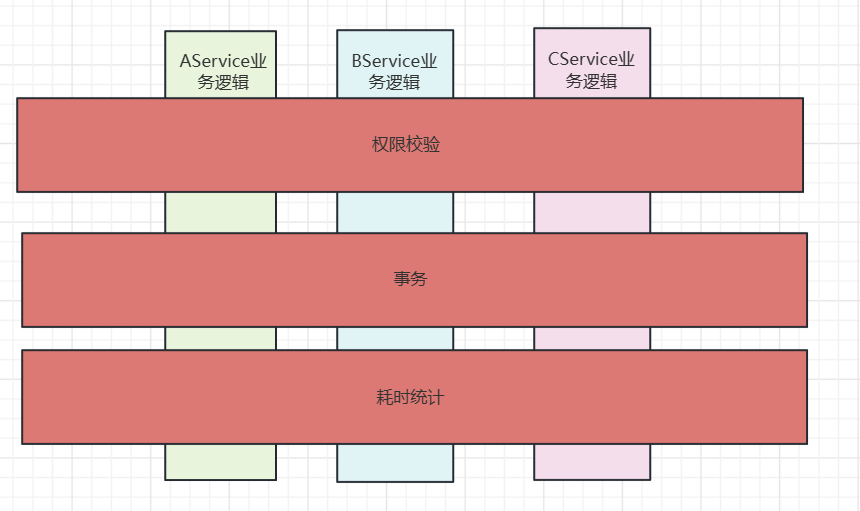





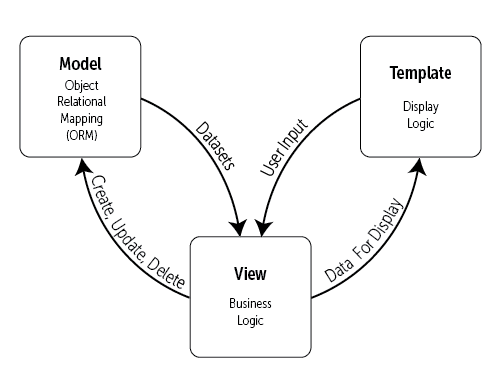
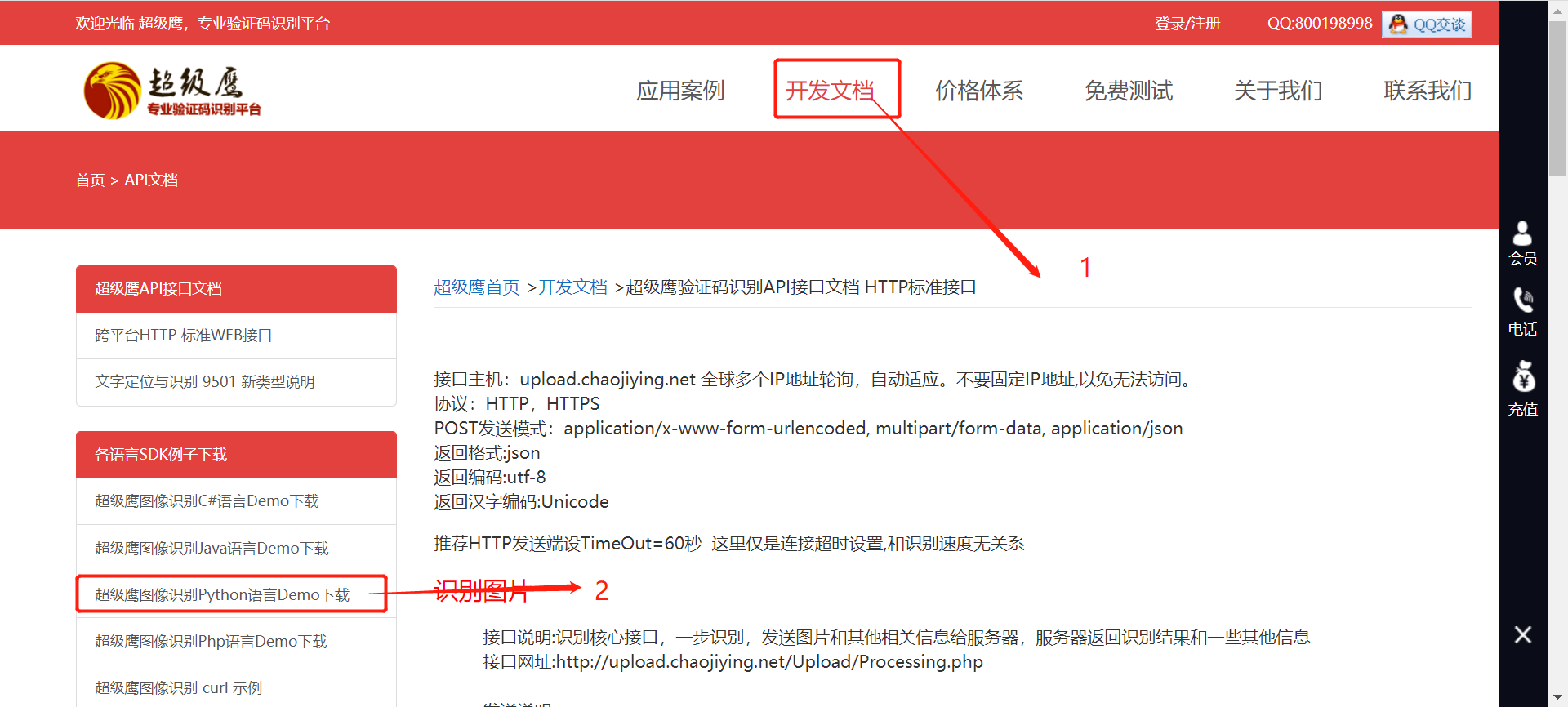
![[ORB/BEBLID] 利用OpenCV(C++)实现尺度不变性与角度不变性的特征找图算法](https://images.cnblogs.com/cnblogs_com/blogs/694685/galleries/2013924/o_231119135432_matcher_result1.jpg)
